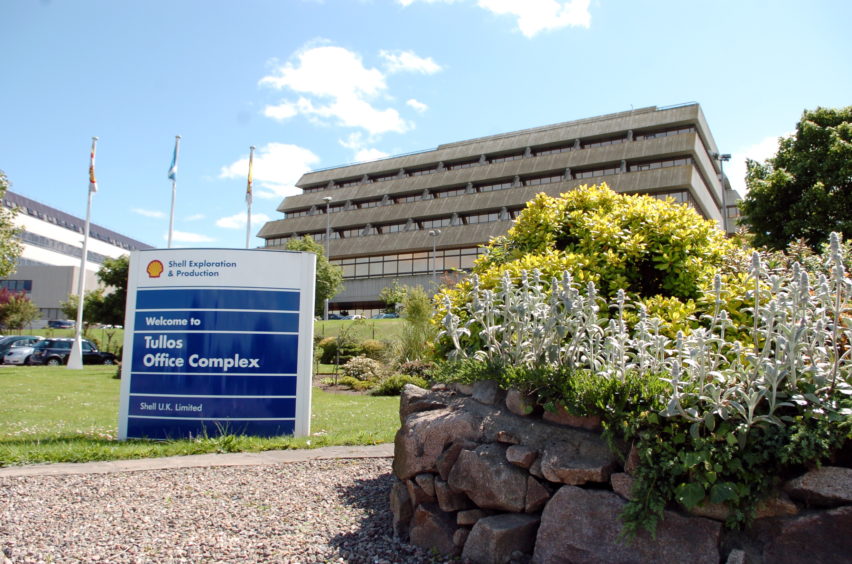
Activists have banded together to demand a rethink on plans to demolish a prominent landmark – for the sake of the environment.
Energy giant Shell last week revealed plans to demolish its former HQ in Tullos, which has lain empty since the firm took over a more central spot at the Silver Fin on Union Street.
The five-story block in Tullos is one of the city’s most distinctive buildings.
Built in the 1970s, the site reflected the silver city’s booming fortune in oil and gas.
While the loss of the familiar silhouette may cause a few some sorrow, one group of Aberdonians are objecting on completely other grounds – the environmental impact of demolition.
In a letter addressed to Aberdeen City Council, architects and climate change activists say the demolition would emit a large amount of carbon emissions.
While the plans were not open for public comment, they group has requested the proposals are put on hold to see if another solution can be found.
Huge amount of carbon emissions in building materials
Matt Clubb, who first drafted the letter, said carbon emissions during construction and maintenance account for 65% of the carbon emissions over the entire lifetime of the building.
He said the environmental impact of materials used to build structures in the UK is “completely unregulated”.
Although an environmental impact assessment (EIA) was undertaken for the demolition plan, Mr Clubb said they did not take into account the carbon emissions created from knocking down the building.
The owner of architectural design practice mwclubb said: “I’ve written this letter because on a really basic level Shell and the council have made a decision that this building is going to be demolished.
“It doesn’t appear as if they’ve consulted anyone within the public sphere or even measured the impact of the carbon emissions.
“There’s such a huge amount of emissions in buildings already that if we demolish and rebuild then we can forget our Net Zero targets.”
While the report states over 90% of the materials from the site can be reused in other buildings, Mr Clubb said this will all take time and will require the use a lot of heavy machinery and transport.
‘We have to try’
He and other concerned professionals and activists hope to delay the plans and open up the consultation to the public.
Especially with plans for Aberdeen’s energy transition zone (ETZ) “campus model”in the works, Mr Clubb said it was a “perfect example” on how to mitigate extra emissions and reuse existing buildings.
He said although it could be “challenging” to bring the former Shell HQ up to scratch, some believed it was “doable”.
Following this year’s extreme temperatures and wildfires, Mr Clubb said reducing emissions has never been more urgent.
“I think we have to try,” he added.
“It would certainly need more insulation and more air tightness to make the building less leaky.
“But we should be giving a nod to the history and saying ‘yeah it was the Shell building for decades and now it’s this other thing.’
“There’s a whole suite of things that it could be used if we really embraced the transition.”
Shell declined to comment.
Aberdeen City Council has been approached to comment.

